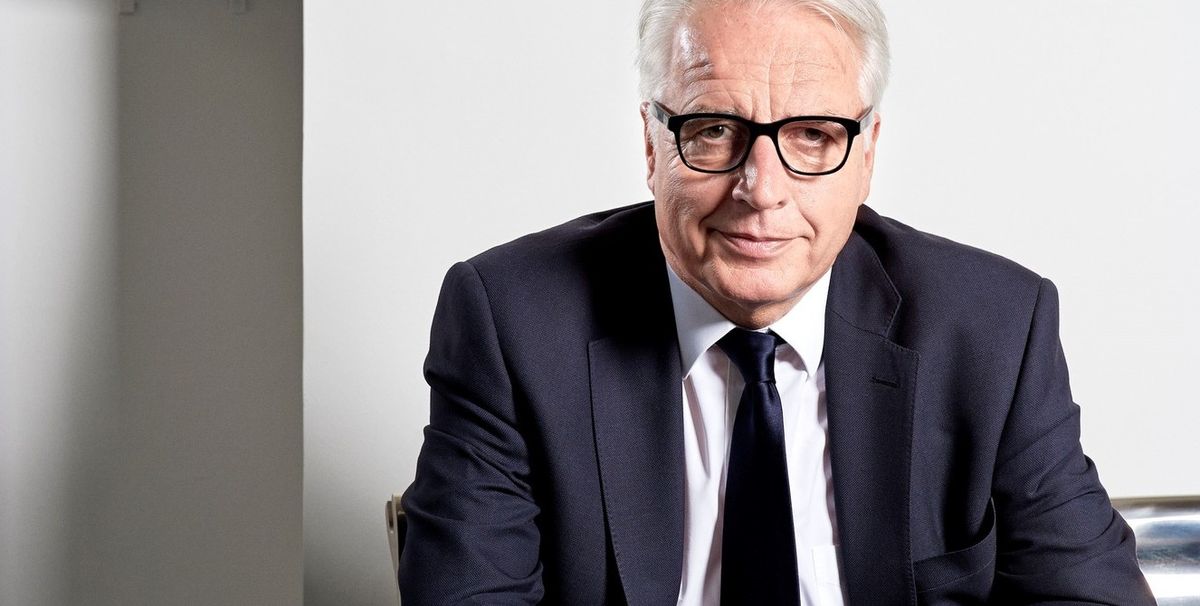I felt I knew Martin long before I arrived for interview at the Victoria and Albert Museum (V&A) in spring 2013, when I got wind of the infamous headline shortly after his arrival in the UK—“Welcome to scruffy Britain: German director of the V&A lambasts the dressed-down style which has outlawed the tie”. As a committed tie-wearer, I liked him immediately.
But at the interview, as the rest of the panel probed relentlessly, Martin barely said a word, fixing me throughout with a stare that I can only describe as “hostile”—occasionally breaking off to check his e-mails. At that moment, the jury on both sides of the table seemed to be out, and I was surprised to be invited back for a one-to-one with Martin a couple of weeks later. This time he was a different person—disarming and engaging, seemingly interested in every detail of my life. And that was Martin—confident and imposing, almost the stereotypical impresario museum director from central casting—but at the same time uncomfortable with the formal. In a more informal setting, usually over a double espresso at Orsini or a walk in Hyde Park, he was warm and endlessly fascinating. He finished our second meeting by asking me when I could start, and a close partnership was formed.
We worked together for just three years, and I take many fond memories from that short but productive time. To see Martin first hand—in China as we set up a museum partnership, or in Berlin being repeatedly stopped in the streets by former colleagues or fans, in Vienna founding the Applied Arts Museums Group, or in Venice as we opened a display at the Biennale—was to see a consummately sophisticated international cultural ambassador, and a man immensely proud to introduce himself as the director of the V&A and only too aware of the cachet and responsibility of the title. My favourite trip, was a visit to Dresden in my early days at the V&A. Having left Heathrow at dawn, he proudly shown me “his Berlin”, before we drove to Dresden, arriving late. After dinner and approaching midnight, I was ready for bed. Martin, of course, had other ideas, and our walk around that beautiful city, lit up like a Christmas tree, in the dead of night, hearing the stories of his time there, exhausted though I was, will stay with me for many years.
Another story which says a great deal about Martin was a visit to Coventry, where he stood at the altar in the ruins of Coventry Cathedral, and then the Herbert’s Peace and Reconciliation Gallery, with tears in his eyes, reflecting as he always did on that which binds rather than separates us. I saw those tears again more recently, standing with him in the V&A’s You Say You Want A Revolution? Records and Rebels 1966-70. The Martin I knew led with his heart as much as his head.
Martin encouraged us to think big, beyond the walls of this building and far beyond the world of museums; he encouraged us to think about the relevance of what we do to people’s everyday lives, and the events that affect those lives around the world. At the V&A, this translated into exhibitions such Disobedient Objects and All of This Belongs to You, our rapid response collecting, the Engineering Season, the V&A Research Institute.
Martin was a brilliant man. He was also a maverick, and a disrupter, occasionally dividing opinion. This is no better represented than in the two headlines offered by the same paper upon his resignation from the V&A last year: “Martin Roth didn't like the V&A any more than the V&A liked him” and “Martin Roth: the V&A's most successful director on his departure and why the rise in nationalism is a bad thing”.
There is so much we at the V&A have to thank Martin for. The rollercoaster of working together—scary, fun, exhilarating. The pride and imagination with which he represented our great institution home and away. For encouraging us all to take risks, to search for the new, the different, the alternative—to imagine a greater impact and role for our museum in the 21st century. He left the V&A richer than he found it. He leaves those who knew him with expanded minds, a broader perspective, enticing if sometimes hazy horizons, endless possibilities—acutely aware of went before, but facing forwards to a future of limitless possibility.


